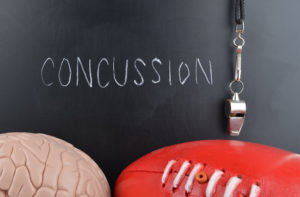Sport and Sex-Specific Reporting Trends in the Epidemiology of Concussions Sustained in High School Athletes
Approximately 300,000 U.S. adolescents sustain concussions annually while participating in organized athletics. An investigation was done by the Department of Orthopedic Surgery at North Western University Feinberg School of Medicine aimed to track sex and sport-specific trends among high school sports-related concussions over time, to identify whether a particular sport predisposes athletes to a higher risk, and to assess whether traumatic brain injury law enforcements have been successful in improving recognition.
Data was collected between the years 2005-2014; the relative proportions of total estimated concussions to estimated injuries were compared using an injury proportion ratio. From the first school year in 2005-2006 to 2014-2015, there was a significant increase in the overall number of concussions for all sports combined. Based on the injury proportion ratio, during the 2014-2015 academic year, concussions were most common in girls’ soccer than any other sport.
Due to the high risk of concussions and the devastating effects that could occur post-concussion, concussion prevention and recognition measures continue to be emphasized in high school contact sports. The data from this study suggests that the significant increase in the overall rate and proportion of reported concussions during the past decade could have been affected by the traumatic brain injury legislation. Sports-related concussions in adolescent athletes can have a lasting effect, and we now know that female athletes, especially girls’ soccer players, may be at a greater risk for sustaining this injury than other athletes. We can only hope that this study, among others, will lead to more policy and prevention measures that can contribute to halting and ultimately reversing these trends and keeping our student-athletes safe.

